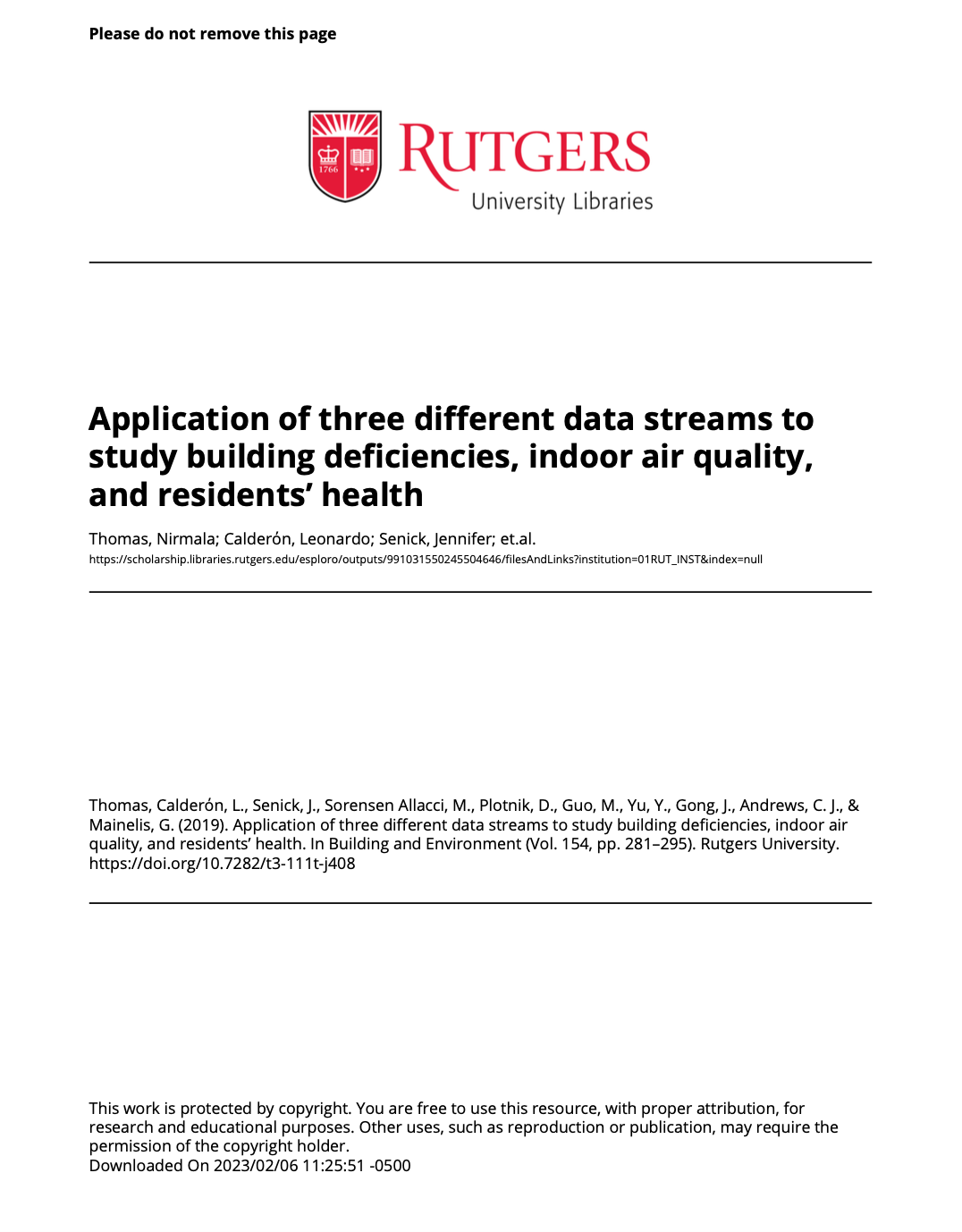This pilot-level project investigated the potential to use, integrate, and correlate traditional indoor air quality investigation data and the use of questionnaires with spatially resolved infrared thermography imaging to investigate building deficiencies and their role in indoor air quality (IAQ) and residents’ health in two residential multi-apartment buildings. Among the deficiencies detected by the 3D thermography, missing insulation correlated best with the IAQ measurement data and questionnaire data. Apartments missing more than 5% of insulation in their exterior wall (“high” group, n=6) had a significantly higher number concentration of ultrafine airborne particles (diameter < 300 nm) (p=0.013) and their indoor/outdoor ratio (p=0.029) compared to apartments where less than 5% of insulation was missing (“low” group, n =14), likely due to particle penetration from outdoors. The difference was driven by apartments with no combustion sources, e.g., smoking, burning of candles or incense. In apartments with the presence of such combustion sources, particles generated indoors overwhelmed the influx of ultrafine particles from outdoors. High levels of missing insulation ranging from 0.55% to 19.62% were detected in apartments with asthma attacks in the past 12 months. Asthma attacks were also associated with the presence of combustion sources indoors (p=0.027). Corner apartments had a higher fraction of missing insulation compared to non-corner apartments (p=0.002). Our data suggest that integration of different data streams is feasible that it could produce a more comprehensive IAQ investigation. This pilot-level study should be performed on a larger scale to examine its wider applicability in the IAQ field.
Application of three different data streams to study building deficiencies, indoor air quality, and residents’ health
Citation:
Thomas Myers, Nirmala; Calderόn, Leonardo; Senick, Jennifer; Sorensen Allacci, MaryAnn; Plotnik, Deborah; Guo, Mengyang; Yu, Yi; Gong, Jie; Andrews, Clinton J.; Mainelis, Gediminas (2019). Application of three different data streams to study building deficiencies, indoor air quality, and residents’ health. Building and Environment, 154, 281-295. https://doi.org/doi:10.7282/t3-111t-j408
